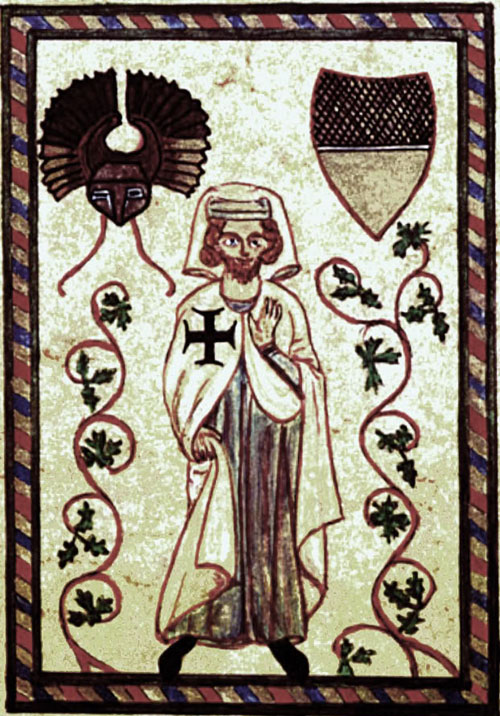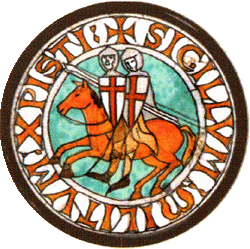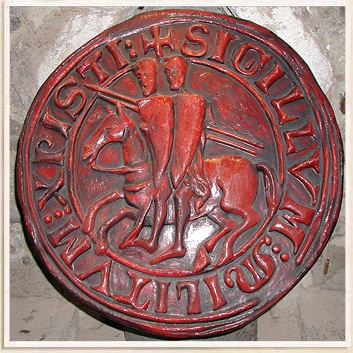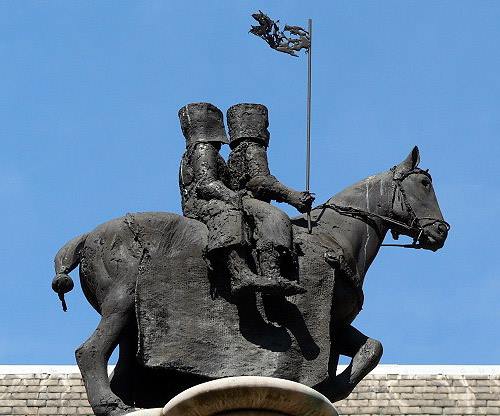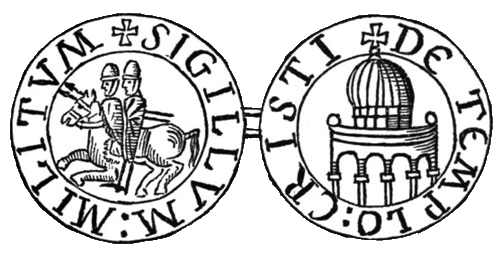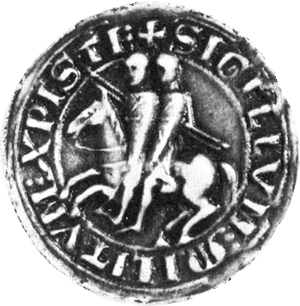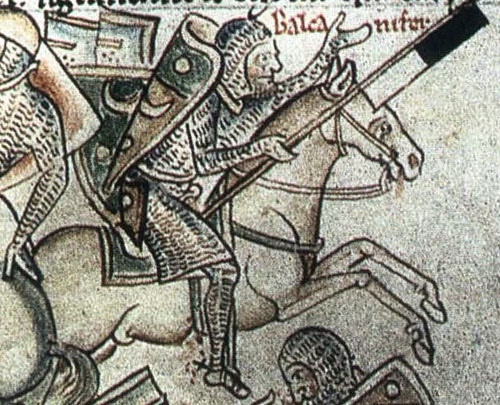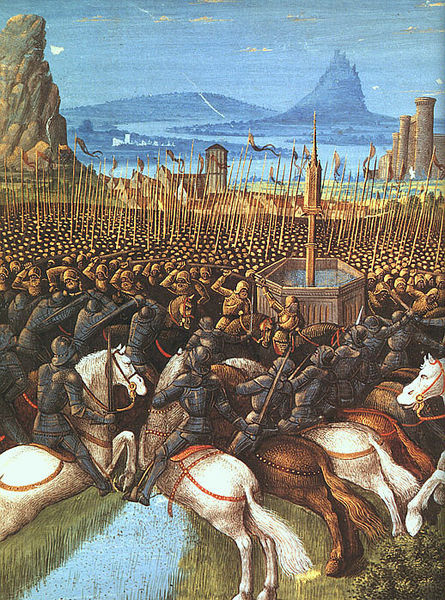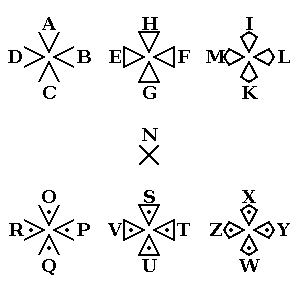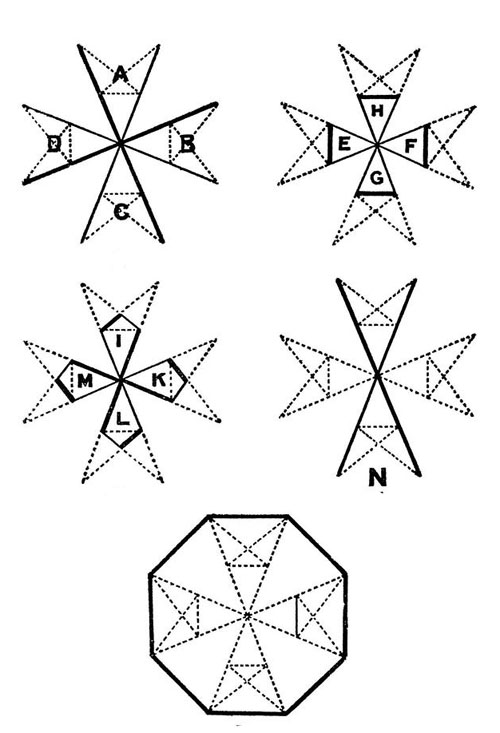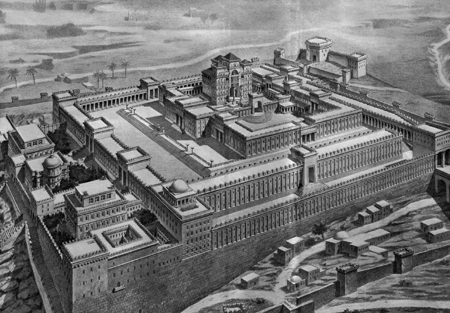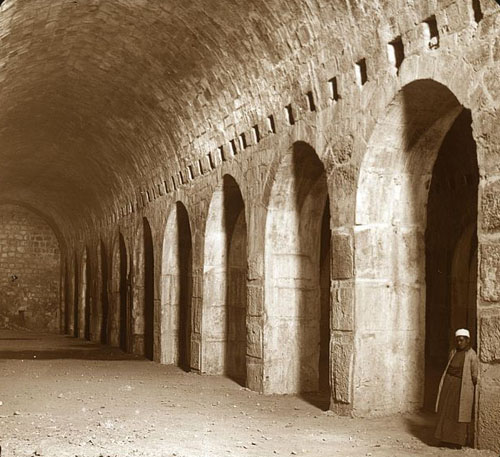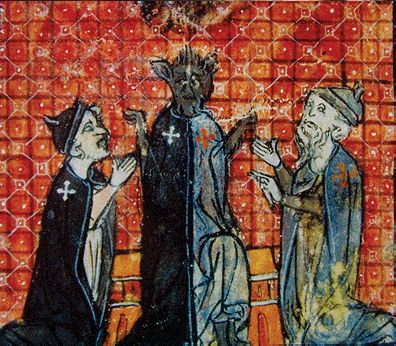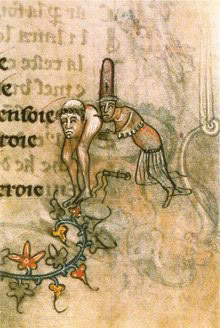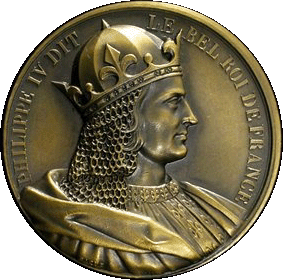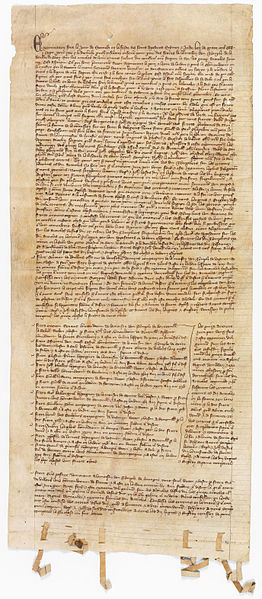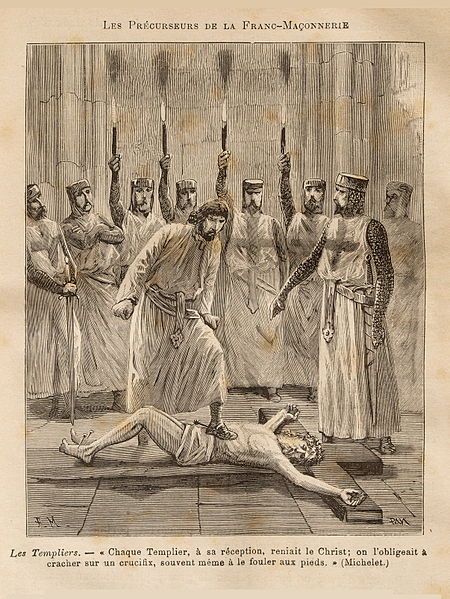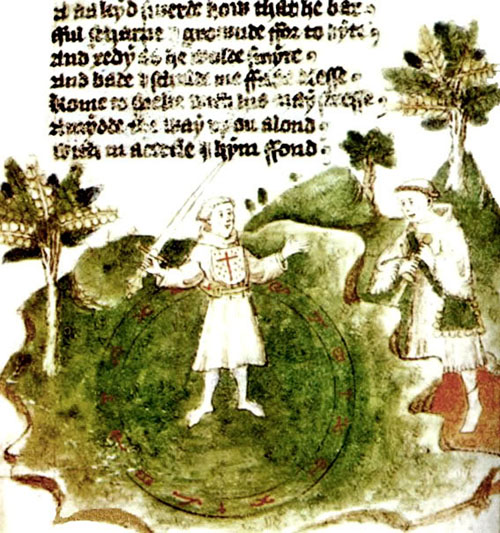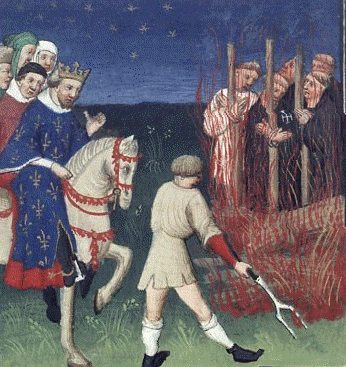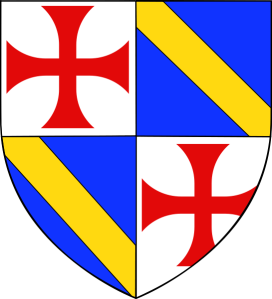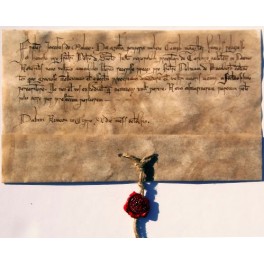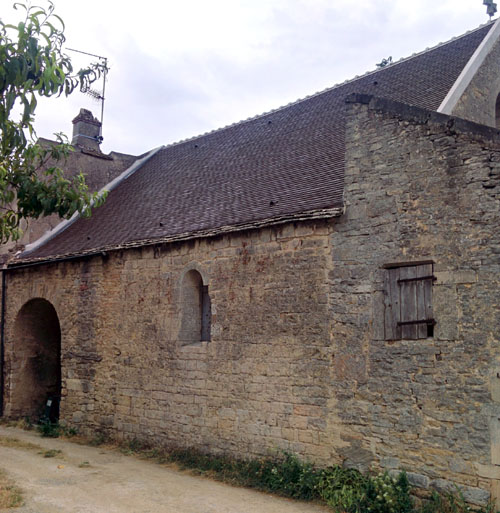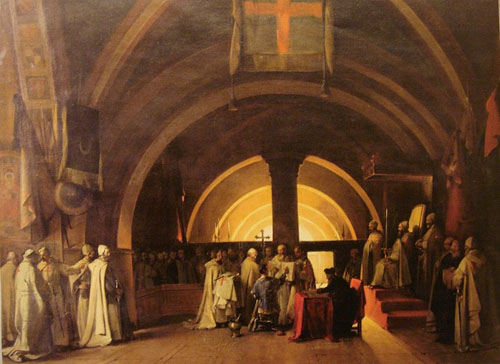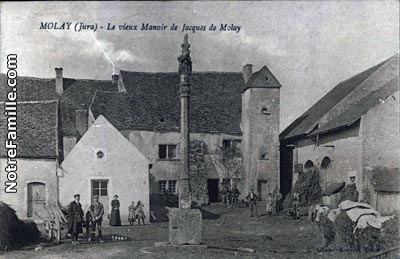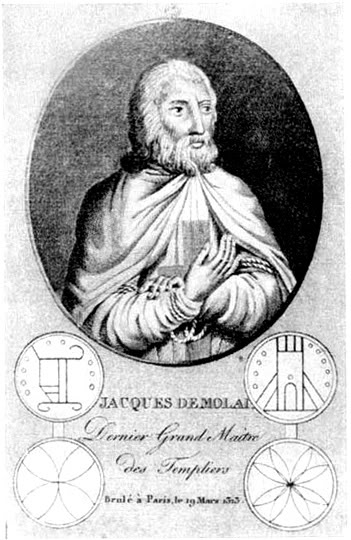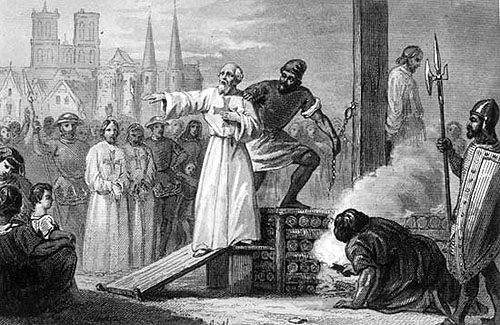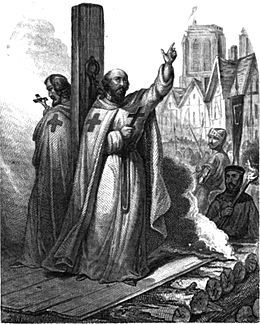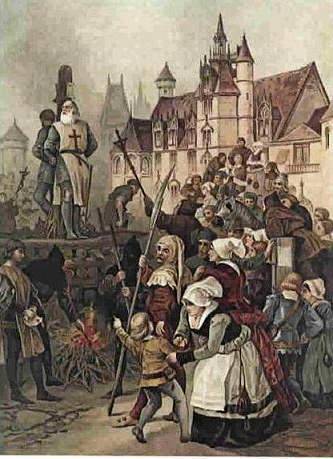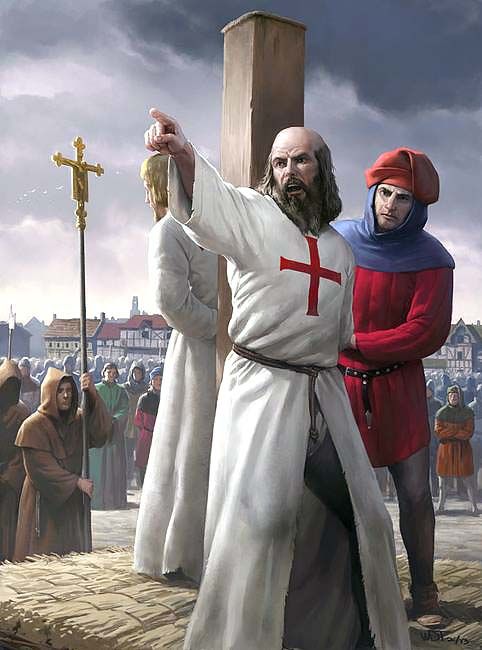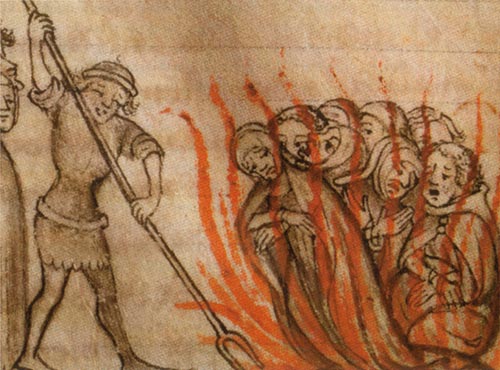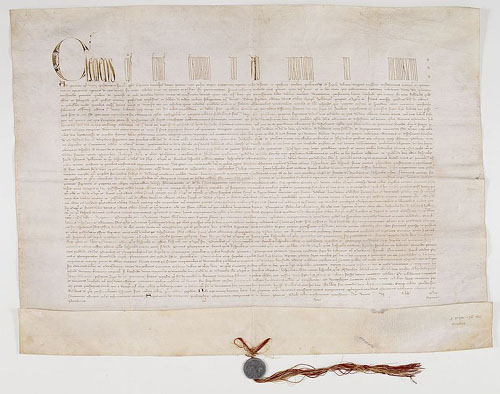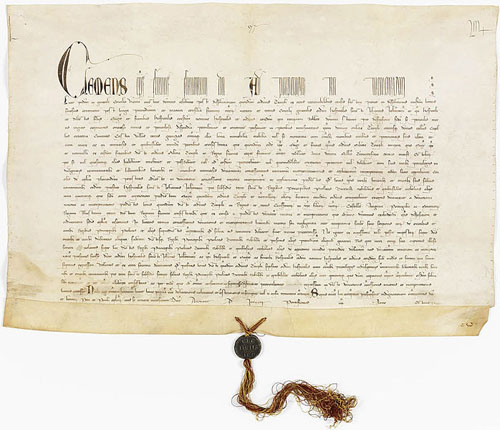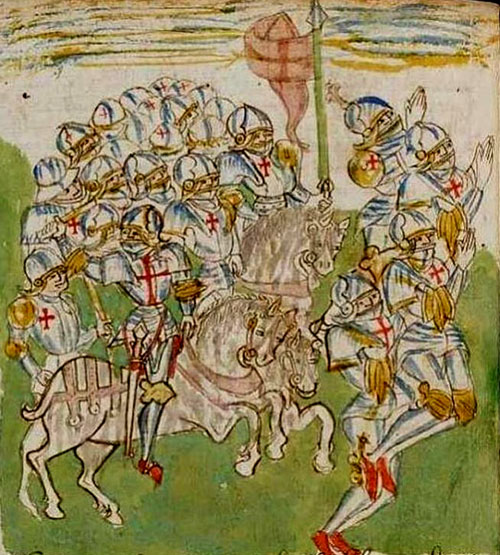Monastic Orders
|
| MEDIEVAL WARFARE |
MEDIEVAL WEAPONS |
MEDIEVAL ARMOUR |
CRUSADES
& CRUSADERS |
TEMPLARS
& HOSPITALLERS |
WILLIAM MARSHAL |
MEDIEVAL LIFE |
MEDIEVAL RE-ENACTMENT |
MEDIEVAL TORTURE |
BOOKS |
|
|
|
|
|
||||||||||||||||||||||||||||||||||||||||||||||||||||||||||||||
|
|
The Templars
|
||||||||||||||||||||||||||||||||||||||||||||||||||||||||||||||||
|
|
|
Knight Templar and Knight Hospitaller stained
glass window |
|
|
|
|

Monastic Military Orders
The Knights Templar were one of a number of military monastic Orders in the medieval period. Odd though it seems to modern ears these orders were composed of warrior monks. They were religious Orders, much like the Cistercians, with the difference that their work was not farming but killing God's enemies.
|
|
|
|
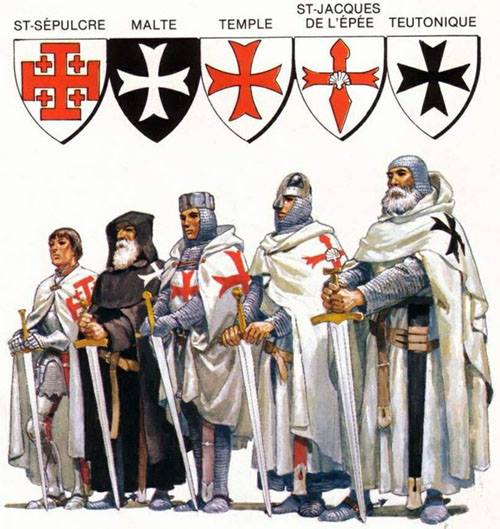 |
Names for the Templars
The Templars full formal name is: Pauperes commilitones Christi Templique Salomonici (The Poor Fellow-Soldiers of Christ and of the Temple of Solomon. They are also known as
- Knights of the the Order of Solomon's Temple
- Poor Knights of Christ
- Knights Templar (or following the French "Knights Templars")
- Templars
|
|
Foundation of the Knights Templar
After the First Crusade recaptured Jerusalem in 1099, many Christians made pilgrimages to various supposedly holy places in the Holy Land. Although the city of Jerusalem was under relatively secure control, the rest of the Holy Land "Outremer" was not. Marauding bandits preyed on pilgrims as they attempted to make the journey from the coast to the "holy places".
In 1119, the French knight Hugues de Payens approached King Baldwin II of Jerusalem and Warmund, Patriarch of Jerusalem, and proposed creating a monastic order for the protection of these pilgrims. Baldwin and Warmund agreed to Hughe's request, probably in January 1120 at the Council of Nablus. Baldwin granted the Templars a headquarters in a wing of the royal palace on the Temple Mount in the captured Al-Aqsa Mosque. The Temple Mount stood above what was believed to be the ruins of the Temple of Solomon. The Crusaders therefore referred to the Al Aqsa Mosque as Solomon's Temple, and from this location the new Order took the name of Poor Knights of Christ and the Temple of Solomon, or "Templar" knights.
The Order, initially with nine knights, had few financial resources and relied on donations to survive. Their emblem was of two knights riding on a single horse, emphasizing the Order's poverty.
Officially recognize by the Roman Catholic Church around 1129, the Order was a favoured throughout western Christendom and grew rapidly in membership and power. The Templars had a powerful friend in Saint Bernard of Clairvaux, a leading Church figure, the French abbot primarily responsible for the popularity of the Cistercian Order of monks and a nephew of one of the nine founding Templar knights.
Bernard wrote persuasively on the Templars behalf in the letter 'In Praise of the New Knighthood', and in 1129, at the Council of Troyes, he led a group of leading churchmen formally to approve the Order on behalf of the Church. With this formal approval, the Templars were favoured throughout Christendom, receiving money, land, farms, castles and the knighted sons of noble families who were eager to help with the fight in the Holy Land.
Saint Bernard provided the moral justification for monks killing people. They were, according to Saint Bernard, killing not a man but killing an evil. Killing in God's name was not homicide but malicide.
In 1139, Pope Innocent II's papal bull Omne datum optimum exempted the Order from obedience to local laws. This ruling meant inter alia that the Templars could pass freely through all borders, were not required to pay any taxes, and were exempt from all authority - both temporal and spiritual - except that of the pope.
|
Organization of the Knights Templar
Military Monks
Bernard de Clairvaux and founder Hugues de Payens devised the specific code of behaviour for the Templar Order, known to modern historians as the Latin Rule. Its 72 clauses defined the ideal behaviour for the Knights, such as the types of garments they were to wear and how many horses they could have. Knights were to take their meals in silence, eat meat no more than three times per week, and not have physical contact of any kind with women, even members of their own family. As the Order grew, more guidelines were added, and the original list of 72 clauses was expanded to several hundred in its final form.
As the Templars were both knights and monks, so their commanderies were both castles and monasteries. Though defensible and strategically located, they featured all the architectural features of a monastery: church, chapter house, cloister, refectory, dormitory, etc.
|
St. Bernard of Clairvaux, In Praise of the
New Knighthood |
|
|
|
|
|
|
A modern image of a Knight Templar in action
|
|
|
 |
Templar Hierarchy
Templar ranks were:
- Knights, who were always noblemen. Templar Knights were equipped as heavy cavalry, with three or four horses and one or two squires. Squires were generally not members of the Order but were instead outsiders who were hired for a set period of time.
- Sergeants. Drawn from non-noble families were Templar sergeants. They brought vital skills and trades such as blacksmithing and building, and administered many of the Order's European properties. In the Crusader States, they fought alongside the knights as light cavalry with a single horse. Sergeants wore black or brown.
- Chaplains, who were ordained priests responsible for the Templars' spiritual needs.
Templars did not perform knighting ceremonies, so any knight wishing to become a Knight Templar had to be a knight already. Knights were the most visible branch of the order, and wore the famous white mantles to symbolize their purity and chastity.
Some of the Order's most senior positions were reserved for sergeants, including the post of Commander of the Vault of Acre, who was the de facto Admiral of the Templar fleet.
All three classes were "brothers" and wore the Order's red cross.
The Templars were organized as a monastic order based on the Cistercian Order, which was considered the first effective international organization in Europe. The organizational structure had a strong chain of authority. Each linguistic area ("tongue") with a major Templar presence had a Provincial Master of the Order for the Templars belonging to that tongue.
Each Templar belonged to a monastery-castle known as a Preceptory or Commandery with its own master, responsible to his Provincial Master or Grand Prior, and ultimately to the Grand Master. The hierarchy was slightly different in the Holy Land (since it was principally involved in fighting, while in Europe the main activity was financial management and recruiting. Like any other great noble the Grand Master had a number of officers such as a Senechal and Marshal, and unlike other great nobles also had a senior officer called a "Draper" because the standardisation of Templar outfits - effectively uniforms - were of such importance.
| Grand Master The Grand Master was the supreme authority of the Templar Order and answered only to the pope. Once elected, the Grand Master served for life. Several Grand Masters were killed in battle, showing that the position was far more than an administrative one. |
||
| Seneschal The Seneschal was the right hand-man to the Grand Master. He also acted as a consigliare or advisor to the Grand Master and looked after many administrative duties. |
||
| Marshal The Marshal of the Order was the Templar in charge of war and anything that was related to it. In this sense the Marshal could be viewed as the second most important member of the Order after the Grand Master. His retinue comprised two squires, one turcoman, one turcopole and one sergeant. He had four horses at his command. An Under Marshal was in charge of the footmen and equipment. |
||
| Standard Bearer The Standard Bearer was in charge of the squires. Despite the title of his office, he never seemed to have carried the Order’s standard himself. |
||
| Draper The Draper was in charge of the Templar garments and linens. The Templar Rule states that after the Master and Marshal, the Draper was superior to all brethren.The Templar Rule said of the Draper’s responsibilities regarding the robe of the order, “and the Draper or the one who is in his place should studiously reflect and take care to have the reward of God in all the above-mentioned things, so that the eyes of the envious and evil-tongued cannot observe that the robes are too long or too short; but he should distribute them so that they fit those who must wear them, according to the size of each one". The Draper had in his personal retinue two squires, a number of tailors and one brother in charge of the pack animals who would carry supplies. The Draper, like the Marshal, had four horses at his disposal. |
||
| HOLY LAND | EUROPE | |
| Commanders of the Lands: Jerusalem, Antioch and Tripoli These Templar officers operated much like a Baillie and operated under the Grand Masters. Commanders were responsible for all Templar houses, castles and farms in their jurisdiction. The personal retinue of the Commanders consisted of two squires, two foot soldiers, one sergeant, one deacon and one Saracen scribe. Like others, the Commander had four horses at his command as well as one palfrey. |
Provincial Masters or Grand Priors Provincial Masters governed the European districts. They were similar to the Commanders of Lands, but were largely been responsible for managing revenue and recruiting new men to the Order. |
|
| Commanders of knights, houses and farms (Casals)
These Templars fell under the Commanders of Lands and were responsible for the day-to-day operations of estates under their care. They were normally knights, but if no knight resided in the region, the position could go to a sergeant. If the Commander was a knight he was permitted four horses, but if a sergeant only two. |
Commanders (of Commandaries / Preceptories) These Templars fell under the Provincial Masters and were responsible for the day-to-day operations of estates under their care. The Commander was invariably a knight and permitted four horses. |
|
| Knights Knights had to be men of noble birth and wore the white mantle that is the most familiar garment of the Order. Each knight was permitted one squire and three horses. |
||
| Chaplains Templar Priests |
||
| Sergeants Sergeants did not have to be of noble birth and to show their lower rank, sergeants wore a black or brown mantle. They were given one horse and had no squires under their command |
||
Provincial Masters, Grand Priors
The Templar Order was divided into regions or "tongues" based on the language of the region. They developed over time but the following list gives a good idea of the Tongues:
- Provence (ie Occitania, the region of the Languedoc speaking Occitan)
- Auvergne (speaking a dialect of Occitan)
- Poitou (including Aquitaine, speaking a dialect of Occitan)
- France
- Burgundy
- Portugal
- Castile
- Aragon
- Valencia
- Sicily & Apulia
- Rome
- Tuscany
- Lombardy
- England
- Germany
- Hungary
- Poland
- Czech Lands
- Jerusalem
- Tripoli
- Antioch
- Cyprus
- Lesser Armenia
Grand Masters
The First Grand Master was Hugues de Payens.
|
Hugues de Payens or Payens (c. 1070 – 24 May 1136) was the cofounder and first Grand Master of the Knights Templar - although the creator of this window seems to have imagined he was the founder of the Knights Hospitaller (The Knights of the Order of Saint John of Jerusalem). |
|
|
All of the Templar Masters were subject to the Grand Master, appointed for life, who oversaw both the Order's military efforts in the East and their financial holdings in the West. The Grand Master exercised his authority via the visitors-general of the order, who were knights specially appointed by the Grand Master and convent of Jerusalem to visit the different provinces, correct malpractice, introduce new regulations, and resolve important disputes. The visitors-general had the power to remove knights from office and to suspend the Master of the province concerned.
The Grand Master of the Order was assigned "4 horses, and one chaplain-brother and one clerk with three horses, and one sergeant brother with two horses, and one gentleman valet to carry his shield and lance, with one horse."
The Grand Master oversaw all of the operations of the Order, including both the military operations in the Holy Land and Eastern Europe and the Templars' financial and business dealings in Western Europe. Some Grand Masters also served as battlefield commanders, though this was not always wise: several blunders in de Ridefort's combat leadership contributed to the devastating defeat at the Battle of Hattin.
Starting with founder Hugues de Payens in 1118-1119, the Order's highest office was that of Grand Master, a position which was held for life, though considering the martial nature of the Order, this could mean a very short tenure. All but two of the Grand Masters died in office, and several died during military campaigns. For example, during the Siege of Ascalon in 1153, Grand Master Bernard de Tremelay led a group of 40 Templars through a breach in the city walls. When the rest of the Crusader army did not follow, the Templars, including their Grand Master, were surrounded and beheaded. Grand Master Gérard de Ridefort was beheaded by Saladin in 1189 at the Siege of Acre.
The last Grand Master was Jacques de Molay, burned at the stake in Paris in 1314 by order of King Philip IV.
Like other great nobles Masters also employed great officers of state, notably marshals, constables, treasurers and admirals.
Templar Dress
The knights wore a white surcoat with a red cross Over it they wore a white mantle also with a red cross. The white mantle was assigned to the Templars at the Council of Troyes in 1129, and the cross was most probably added to their robes at the launch of the Second Crusade in 1147, when Pope Eugenius III, King Louis VII of France, and many other notables attended a meeting of the French Templars at their headquarters near Paris. According to their Rule, the knights were to wear the white mantle at all times, even being forbidden to eat or drink unless they were wearing it.
Sergeants wore a black tunic with a red cross on the front and a black or brown mantle.
|
|
|
Templar knight in 13th century mail. |
|
|
|
|
|
|
|
James Purefoy as Thomas Marshal, a Templar Knight, in the movie Ironclad (2011) |
|
|
As monks, Templars were tonsured. Although not prescribed by the Templar Rule, it became customary for Templars to wear long and prominent beards, as was customary for pilgrims. In about 1240, Alberic of Trois-Fontaines described the Templars as an "order of bearded brethren".
During interrogations by the papal commissioners in Paris in 1310-11, out of some 230 knights and brothers questioned, 76 are described as wearing a beard. In some cases it was described as being "in the style of the Templars". 133 are said to have shaved off their beards, either in renunciation of the order or because they hoped to escape detection.
|
Knight Templar, 13th century |
|||||
|
|
|||||
|
|
|||||
|
Templar Kit - Reproductions |
|||||
|
|
|||||
|
|
|||||
|
Modern Templar re-enactors (Jeff Bauche) |
|||||
|
|
|||||
|
|||||
 |
|||||
Induction as a Templar Knight
Induction, known as Reception (receptio) into the Order, was a profound commitment and involved a solemn religious ceremony. Outsiders were discouraged from attending, which aroused the suspicions of medieval inquisitors during the later trials. New members had to willingly sign over all of their wealth and goods to the Order and take monastic vows (like Cistercian monks) of poverty, chastity, piety, and obedience. Most brothers joined for life, although some were allowed to join for a set period. Sometimes a married man was allowed to join if he had his wife's permission, but he was not allowed to wear the white mantle.

Templar Heraldry
The Templar Cross

![]() The
red cross that the Templars wore on their robes was a symbol of
martyrdom, and to die in combat was considered a great honour that
assured a place in heaven. There was a cardinal rule that the warriors
of the Order should never surrender unless the Templar flag had
fallen, and even then they were first to try to regroup with another
of the Christian orders, such as that of the Hospitallers. Only
after all flags had fallen were they allowed to leave the battlefield.
This uncompromising principle, along with their reputation for courage,
excellent training, and heavy armament, made the Templars one of
the most feared combat forces in medieval times.
The
red cross that the Templars wore on their robes was a symbol of
martyrdom, and to die in combat was considered a great honour that
assured a place in heaven. There was a cardinal rule that the warriors
of the Order should never surrender unless the Templar flag had
fallen, and even then they were first to try to regroup with another
of the Christian orders, such as that of the Hospitallers. Only
after all flags had fallen were they allowed to leave the battlefield.
This uncompromising principle, along with their reputation for courage,
excellent training, and heavy armament, made the Templars one of
the most feared combat forces in medieval times.
|
|||||
 |
|||||
The Baculus
 The
baculus is a rod of authority carried by authority figures in the
Church, such as bishops and abbots (sometimes called staffs, crooks
or croziers). The pastoral staff is variously designated, by ecclesiastical
writers, as virga, ferula, cambutta, crocia, and pedum. Sir Walter
Scott misread baculus as abacus - an error still propagated
by some writers. It is also sometimes further corrupted as abascus.
The
baculus is a rod of authority carried by authority figures in the
Church, such as bishops and abbots (sometimes called staffs, crooks
or croziers). The pastoral staff is variously designated, by ecclesiastical
writers, as virga, ferula, cambutta, crocia, and pedum. Sir Walter
Scott misread baculus as abacus - an error still propagated
by some writers. It is also sometimes further corrupted as abascus.
The Templar Latin Rule says, "The Master ought to hold the staff and the rod (baculum et cirgam) in his hand, that is to say, the staff (baculum), that he may support the infirmities of the weak, and the rod (cirgam), that he may with the zeal of rectitude strike down the vices of delinquents."
The Papal bull, Omne datum optimum, invested the Grand Master of the Templars with almost Episcopal jurisdiction over the priests of his Order. He bore the baculus, or pastoral staff, as a mark of that jurisdiction, and it became a part of the Grand Master's insignia of office.
The baculus of the Knights Templar is described in Munter, Burnes, Addison, and all the other authorities, as a staff, on the top of which is an octagonal figure, surmounted with a cross patee.
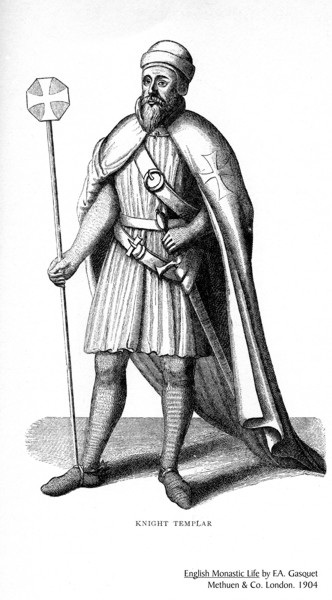
|
||
 |
The Templar Achievement of Arms
|
|||||
 |
|||||
The Templar Seal
|
||
|
||||||||||||
 |
||||||||||||
The Templar Beausant
|
|||||
 |
|||||
Templars at War
Templars were often the advance shock troops in key battles of the Crusades, as the heavily armoured knights on their war-horses would set out to charge at the enemy, ahead of the main army bodies, in an attempt to break opposition lines.
One of their most famous victories was in 1177 during the Battle of Montgisard, where some 500 Templar knights helped several thousand infantry to defeat Saladin's army of more than 26,000 soldiers.
The Templars' existence was tied closely to the Crusades; when the Holy Land was lost, support for the Templar Order faded.
In the mid-12th century, the tide began to turn in the Crusades. The Muslim world had become more united under effective leaders such as Saladin, and dissension arose amongst Christian factions in, and concerning, the Holy Land. The Knights Templar were occasionally at odds with the two other Christian military orders, the Knights Hospitaller and the Teutonic Knights, and decades of internecine feuds weakened Christian positions, both politically and militarily. After the Templars were involved in several unsuccessful campaigns, including the pivotal Battle of the Horns of Hattin, Jerusalem was recaptured by Muslim forces under Saladin in 1187. The Crusaders regained the city in 1229, without Templar aid, but held it only briefly. In 1244, the Khwarezmi Turks recaptured Jerusalem, and the city did not return to Western control until 1917 when the British captured it from the Ottoman Turks in World War I.
The Templars were forced to relocate their headquarters to other cities in the north, such as the seaport of Acre, which they held for the next century. It was lost in 1291, followed by their last mainland strongholds, Tortosa (Tartus in what is now Syria) and Atlit in present-day Israel. Their headquarters then moved to Limassol on the island of Cyprus, and they also attempted to maintain a garrison on tiny Arwad Island, just off the coast from Tortosa. In 1300, there was some attempt to engage in coordinated military efforts with the Mongols via a new invasion force at Arwad. In 1302 or 1303, however, the Templars lost the island to the Egyptian Mamluks in the Siege of Arwad. With the island gone, the Crusaders lost their last foothold in the Holy Land.
With the Order's military mission now less important, support for
the organization began to dwindle. The situation was complex, however,
since during the two hundred years of their existence, the Templars
had become a part of daily life throughout Christendom. The organization's
Templar Houses, hundreds of which were dotted throughout Europe
and the Near East, gave them a widespread presence at the local
level. The Templars still managed many businesses, and many Europeans
had daily contact with the Templar network, such as by working at
a Templar farm or vineyard, or using the Order as a bank in which
to store personal valuables. The Order was still not subject to
local government, making it everywhere a "state within a state"-its
standing army, though it no longer had a well-defined mission, could
pass freely through all borders. This situation heightened tensions
with some European nobility, especially as the Templars were indicating
an interest in founding their own monastic state, just as the Teutonic
Knights had done in Prussia and the Knights Hospitaller were doing
in Rhodes.
Notable Battles
Siege of Ascalon (1153)
Battle of Montgisard (1177)
Battle of Marj Ayyun (1179)
Battle of Hattin (1187)
Siege of Acre (1190-1191)
Battle of Arsuf (1191)
Siege of Al-D?m?s (1210)
Battle of Legnica (1241)
Siege of Acre (1291)
Reconquista
|
Battle of the Horns of Hattin in 1187 |
|
|
|
|

Templars as the First Bankers
The Templar Order, though its members were sworn to individual poverty, was given control of wealth beyond direct donations. A nobleman interested in participating in the Crusades might place all his assets under Templar management while he was away. Accumulating wealth in this manner throughout Christendom and the Outremer, the Order in 1150 began generating letters of credit for pilgrims journeying to the Holy Land: pilgrims deposited their valuables with a local Templar preceptory before embarking, received a document indicating the value of their deposit, then used that document upon arrival in the Holy Land to retrieve their funds in an amount of treasure of equal value.
For financial and other confidential transactions, the Templars used a simple substitution cypher - easy to break to today but impossible to break in the medieval period.
|
The Secret Cypher of the Knights Templar |
|
|
This innovative arrangement was an early form of banking and may have been the first formal system to support the use of cheques; it improved the safety of pilgrims by making them less attractive targets for thieves, and also contributed to the Templar coffers.
Based on this mix of donations and business dealing, the Templars established financial networks across the whole of Christendom.
They acquired large tracts of land, both in Europe and the Middle East; they bought and managed farms and vineyards; they built churches and castles; they were involved in manufacturing, import and export; they had their own fleet of ships; and at one point they even owned the island of Cyprus. The Order of the Knights Templar has been described as the world's first multinational corporation.
|
|
|
The Templar Pigpen cypher showing how it is derived |
|
|
 |
Templar Locations
With their military mission and vast financial resources, the Knights Templar funded a huge number of building projects in the Holy Land, and around Europe and. Only a small percentage of these structures are still standing. Many sites also maintain the name "Temple" because of centuries-old association with the Templars.
Jerusalem |
|
A reconstruction of the Temple of Solomon in Jerusalem, where the Templars were based, and from which they took their name. |
|
|
|
Templar Locations in Europe |
|
|
|
Solomon's Stables under the Temple Platform, Jerusalem |
|
|
|
Templar Preceptories (Commanderies) in Europe |
|
|
 |
Trial of the Templars
In 1305, the new Pope, Clement V, based in Avignon, sent letters to both the Templar Grand Master Jacques de Molay and the Hospitaller Grand Master Fulk de Villaret to discuss the possibility of merging the two Orders.
Neither was amenable to the idea, but Pope Clement persisted, and in 1306 he invited both Grand Masters to France to discuss the matter. De Molay arrived first in early 1307, but de Villaret was delayed for several months.
While waiting, De Molay and Clement discussed criminal charges that had been made two years earlier by an ousted Templar and were being discussed by King Philip IV of France (Philippe le Bel) and his ministers. It was generally agreed that the charges were false, but Clement sent the king a written request for assistance in the investigation.
Philip, who was already deeply in debt to the Templars from his war with the English, seized upon the rumours for his own purposes. He began pressuring the Church to take action against the Order, as a way of freeing himself from his debts - a method he had used to free himself from debts incurred to the Jews a few years earlier.
Rumours about the Templars' secret initiation ceremony created distrust and King Philip IV of France took advantage of the situation. In 1307, many of the Order's members in France were arrested, tortured into giving false confessions, then burned at the stake.
Under pressure from King Philip, Pope Clement V disbanded the Order in 1312. The abrupt disappearance of a major part of the European infrastructure gave rise to speculation and legends, which have kept the "Templar" name alive into modern times.
At dawn on Friday, 13 October 1307 ( sometimes linked with the origin of the Friday the 13th superstition) King Philip IV ordered de Molay and scores of other French Templars to be simultaneously arrested.
The arrest warrant started with the phrase: "Dieu n'est pas content, nous avons des ennemis de la foi dans le Royaume" ["God is not pleased. We have enemies of the faith in the kingdom"]. Claims were made that during Templar admissions ceremonies, recruits were forced to spit on the Cross, deny Christ, and engage in indecent kissing; brethren were also accused of worshiping idols, and the order was said to have encouraged homosexual practices.
|
The Pope, as a fox, medieval symbol of deception, blesses the Grand Masters of the Knights Templar and Knights Hospitallers |
|
|
Templar prisoners were coerced to confess that they had spat on the Cross. They s were accused of idolatry and were suspected of worshipping either a figure known as Baphomet or a mummified severed head they recovered at their original headquarters on the Temple Mount - sometimes speculated to be that of of John the Baptist.
At Phillip's demand, Pope Clement issued the papal bull Pastoralis praeeminentiae on 22 November 1307, which instructed all Christian monarchs in Europe to arrest all Templars and to seize their possessions. Clement called for papal hearings to determine the Templars' guilt or innocence, obtaining further confessions under torture. Once freed of the Inquisitors' torture, many Templars recanted their confessions. Some had sufficient legal experience to defend themselves in the trials, but in 1310, Philip blocked this attempt, using the previously forced confessions to have dozens of French Templars burned at the stake in Paris.
With Philip threatening military action unless the pope complied with his wishes, Clement finally agreed to disband the Order, citing the public scandal that had been generated by the confessions. At the Council of Vienne in 1312, he issued a series of papal bulls, including Vox in excelso, which officially dissolved the Order, and Ad providam, which turned over Templar assets to the Hospitallers.
|
|
|
The osculum infame, another fantasy charge against the Templars, as against the Cathars and other groups accused of heresy by the Catholic Church. |
||
|
|
||
|
|
||
|
|
||
|
||
|
Record of the interrogation of 13 Templars
in the Baili of Caen |
||
|
|
||
|
||
|
|
||
|
An imaginative representation of a Templar
initiate trampling on the cross |
||
|
|
||
|
Another fantasy image: a Templar engaging in sorcery |
||
|
|
||
|
|
||
|
The Trial of the Templars by Malcolm Barbar - Recommended. |
||
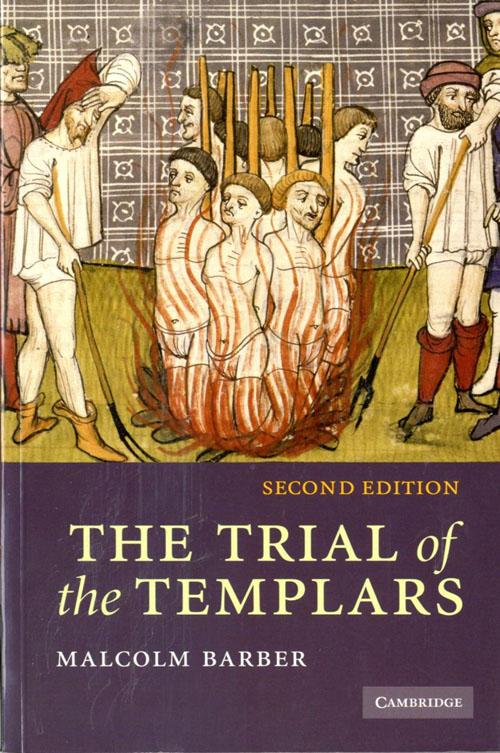 |
||
 |
||
Jacques de Molay
Jacques de Molay (c. 1243 – 18 March 1314) was the 23rd and last Grand Master of the Knights Templar, leading the Order from 20 April 1292 until it was dissolved by order of Pope Clement V. Little is known of his early life except that he joined the order at Beaune in a building that still stands.
Jacques de Molay is the best known Templar, largely because of his fate. Already aged Jacques de Molay, had confessed under torture, but later retracted his confession. Geoffroi de Charney, Preceptor of Normandy, also retracted his confession and insisted on his innocence. Both men were declared guilty of being relapsed heretics, and they were sentenced to burn alive at the stake in Paris on 18 March 1314.
According to legend, he called out from the flames that both Pope Clement and King Philip would soon meet him before God. His actual words were recorded on the parchment as follows : "Dieu sait qui a tort et a péché. Il va bientot arriver malheur à ceux qui nous ont condamnés à mort" (free translation : "God knows who is wrong and has sinned. Soon a calamity will occur to those who have condemned us to death"). In any case, Pope Clement died a month later, and King Philip died in a hunting accident before the end of the year.
Burning Jacques de Molay at the stake, along with Geoffroi de Charney, Preceptor of Normandy, was a popular topic for artistic representation, often with King Philip present, watching proceedings.
|
|
|
Philip le Bel oversees the execution of Templars being burned at the stake |
|
|
|
Coat of arms of Jacques de Molay as Grand
Master of the Templars |
|
|
|
Autograph copy of a letter from Jacques de Molay to Pedro de Sant Just |
|
|
|
|
|
Maison du Temple de Beaune |
||||||||||||
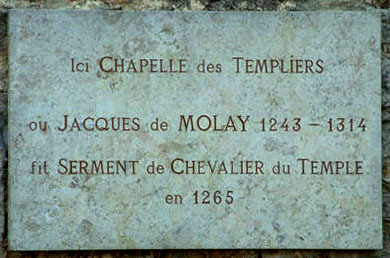 |
||||||||||||
|
|
||||||||||||
|
Templar Chapel Beaune House |
||||||||||||
|
|
||||||||||||
|
|
||||||||||||
|
Jacques de Molay in 126 at the Beaune Commandery, by Marius Granet 1777-1849 |
||||||||||||
|
|
||||||||||||
|
A modern representation of Jacques de Molay |
||||||||||||
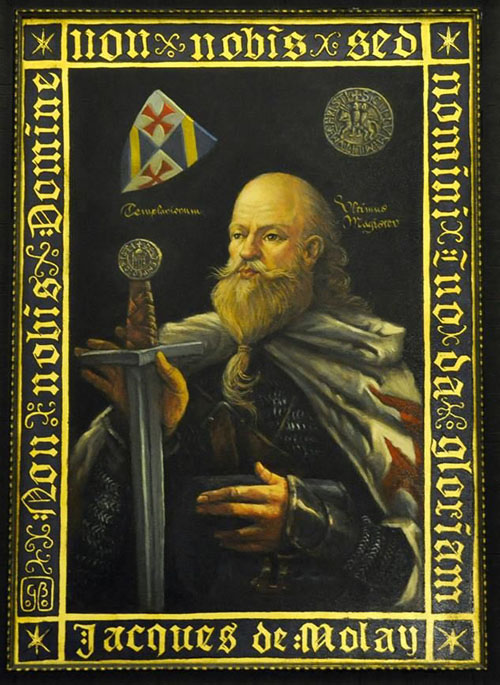 |
||||||||||||
|
The old Manor of Jacques de Molay |
||||||||||||
|
|
||||||||||||
|
|
||||||||||||
|
Autograph copy of a letter from Jacques de Molay , the last Master of the Temple to Pedro de Sant Just - detail |
||||||||||||
|
|
||||||||||||
|
|
||||||||||||
|
A nineteenth century image of Jaques De Molay |
||||||||||||
|
|
||||||||||||
|
Jacques de Molay, last Grand Master of the Templars, being burned at the stake |
||||||||||||
|
|
||||||||||||
|
|
||||||||||||
|
||||||||||||
 |
||||||||||||
The Fate of the Templars
With Jacques de Molay gone, Templars around Europe were either arrested and tried under the Papal investigation, or absorbed into other military orders (generally the Knights Hospitaller), or pensioned off and allowed to live out their days peacefully. By papal decree, the property of the Templars was transferred to the Order of Hospitallers. In effect, the dissolution of the Templars became a merger of the two Orders.
Some Templars may have fled to other territories outside Papal control, such as Scotland was under a papal Interdict or to Switzerland. Templar organizations in Portugal simply changed their name, from Knights Templar to Knights of Christ.
Burning Templars at the stake was a popular topic for artistic representation, often with King Philip present, watching proceedings.
|
|
|
Templars being burned at the stake |
||||||
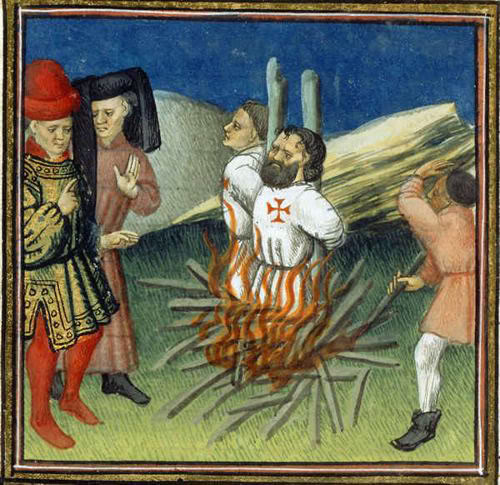 |
||||||
|
Templars being burned at the stake |
||||||
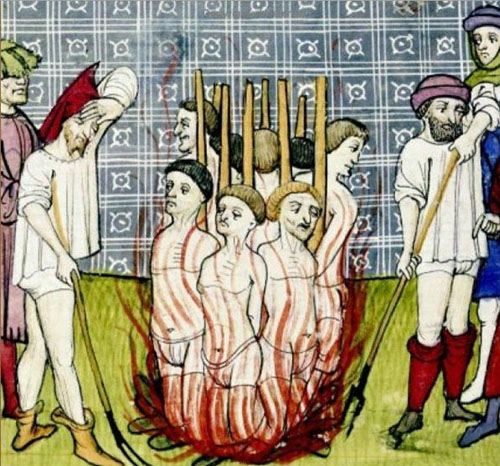 |
||||||
|
|
||||||
|
Philip le Bel oversees the execution of Templars being burned at the stake |
||||||
|
|
||||||
|
Templars being burned at the stake |
||||||
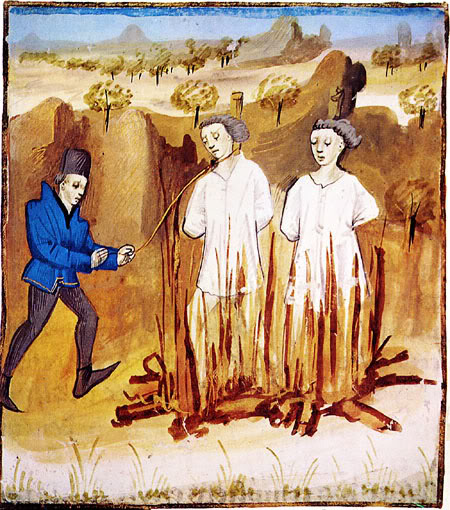 |
||||||
|
Philip le Bel oversees the execution of
Templars being burned at the stake |
||||||
|
|
||||||
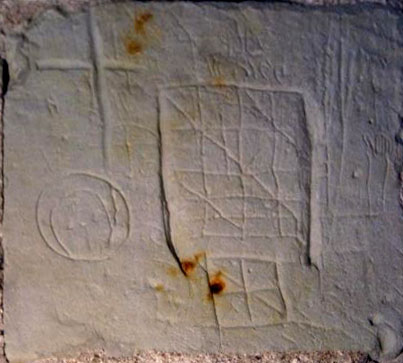 |
||||||
|
Templars, anonymous chronicle, From the
Creation of the World until 1384, |
||||||
|
|
||||||
|
The Chinon Parchment
In September 2001, a document known as the "Chinon Parchment" dated 17-20 August 1308 was discovered in the Vatican Secret Archives by Barbara Frale. It is a record of the trial of the Templars and shows that Pope Clement absolved the Templars of all heresies in 1308 before formally disbanding the Order in 1312, It effectively exonerates The Templars of the charges trumped up against them. Even the Catholic Church now recognizes that Clement was pressured into the trial and dissolution by his more powerful relative, King Philip IV.
|
|
|
The Chinon Parchment |
|
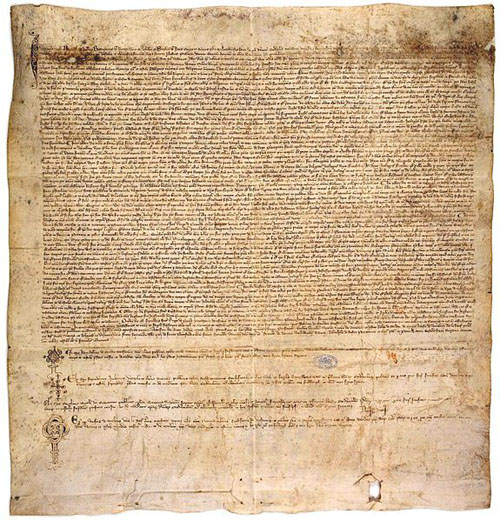 |
|
|
Knights Templar in popular culture
Based on speculation and popular literature since the 19th century, the Templars and associated "legends" or "mysteries" have become a common trope in popular culture. The association of the Holy Grail with the Templars has precedents even in 12th century fiction; Wolfram von Eschenbach's Parzival calls the knights guarding the Grail Kingdom templeisen, apparently a conscious fictionalization of the Templars.
Modern fictionalization of the Templars begins with Ivanhoe, the
1820 novel by Walter Scott, where the villain Sir Brian de Bois-Guilbert
is a "Templar Knight".
The popular treatment of the Templars as a topic of esotericist
"legend" and "mystery" begins in the later 20th
century.
The French historical novel series Les Rois maudits (1955-1977) by Maurice Druon depicts the death of the last Grand Master of the Order, and plays with the legend of the curse he laid on the pope, Philip the Fair and Guillaume de Nogaret. Beginning in the 1960s, there have been speculative popular English publications surrounding the Order's early occupation of the Temple Mount in Jerusalem and speculation about what relics the Templars may have found there, such as the Holy Grail or the Ark of the Covenant.
Esotericist treatments become common in the 1980s. Among them, the 1982 The Holy Blood and the Holy Grail would prove most influential. The 1988 novel by Umberto Eco Foucault's Pendulum satirizes the presentation of the Templars in esotericist or pseudohistorical conspiracy theories. A revival of the 1980s themes took place in the 2000s due to the commercial success of The Da Vinci Code, the 2003 novel by Dan Brown (adapted into a film version in 2006).
|
|
|
Templar Knights |
|
|
| MEDIEVAL WARFARE |
MEDIEVAL WEAPONS |
MEDIEVAL ARMOUR |
CRUSADES
& CRUSADERS |
TEMPLARS
& HOSPITALLERS |
WILLIAM MARSHAL |
MEDIEVAL LIFE |
MEDIEVAL RE-ENACTMENT |
MEDIEVAL TORTURE |
BOOKS |
| :::: Link to us :::: Medieval Warfare Resources ::: © C&MH 2010-2013 ::: contact@medievalwarfare.info ::: Advertising ::: |


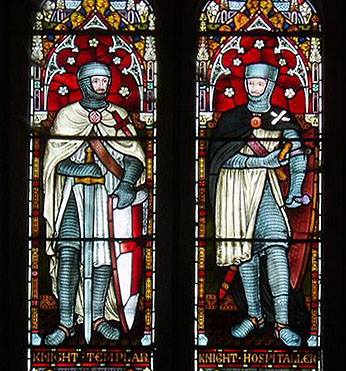

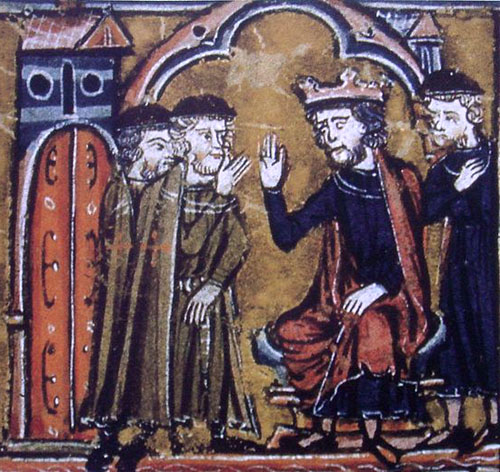
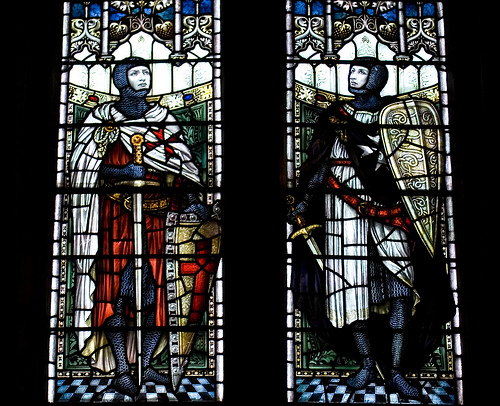
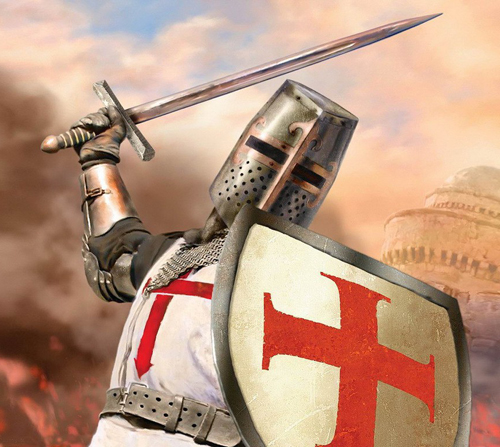
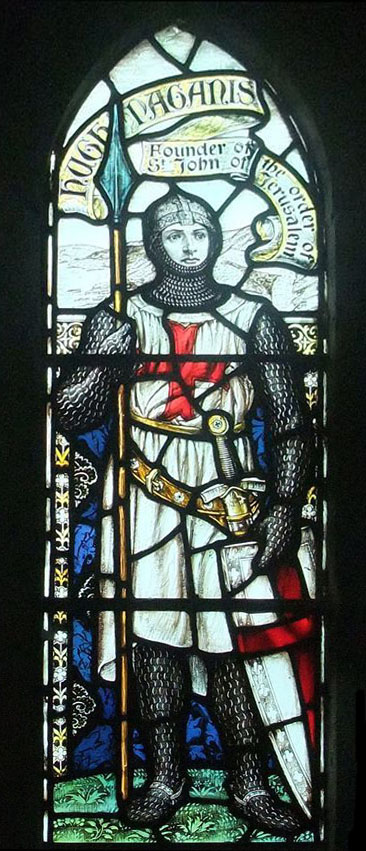
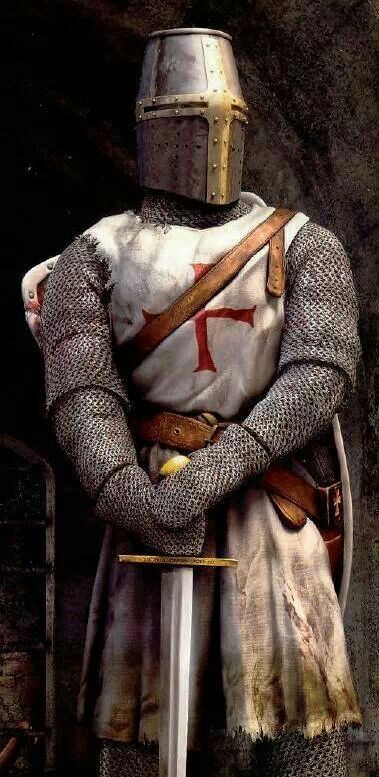
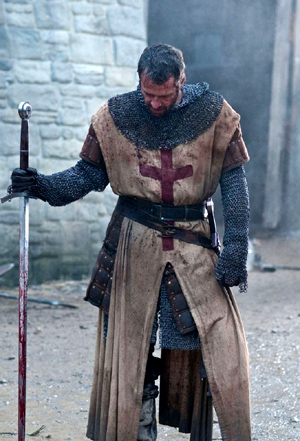
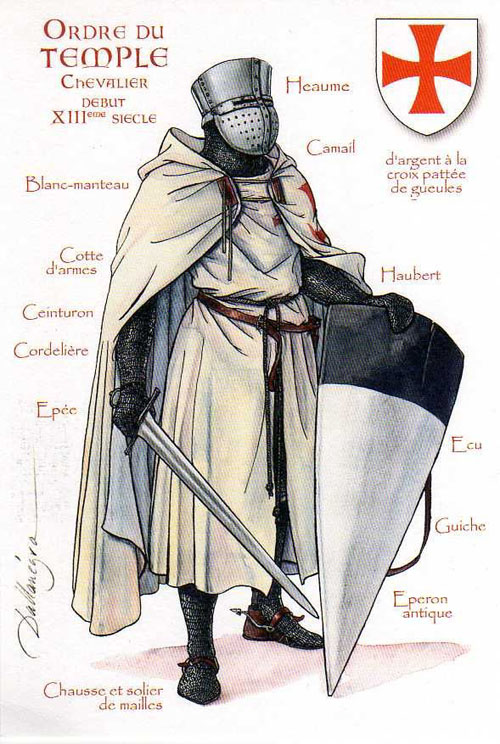
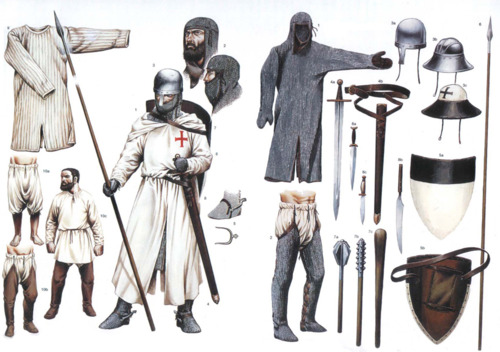
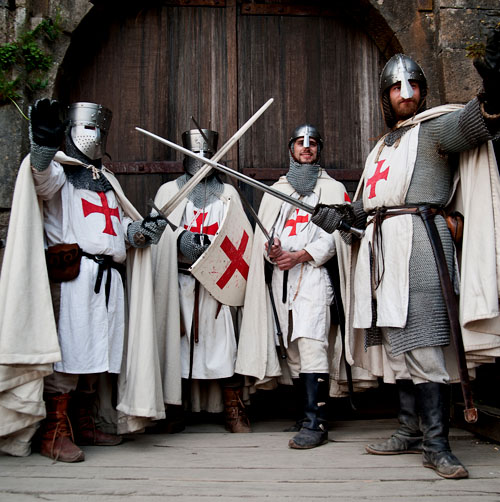
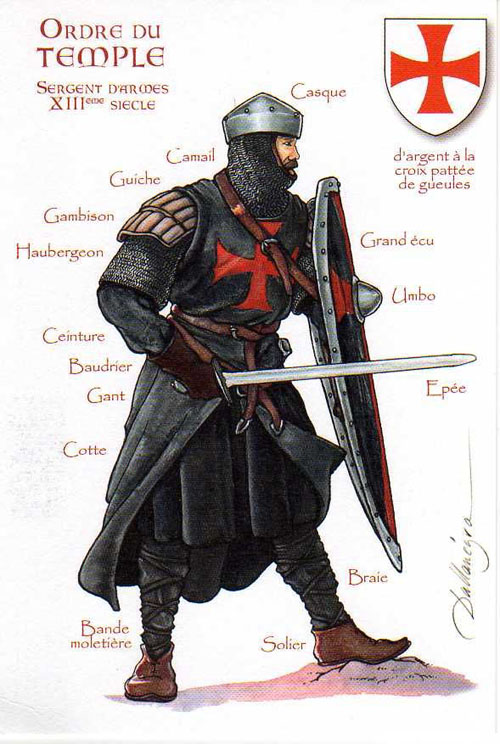
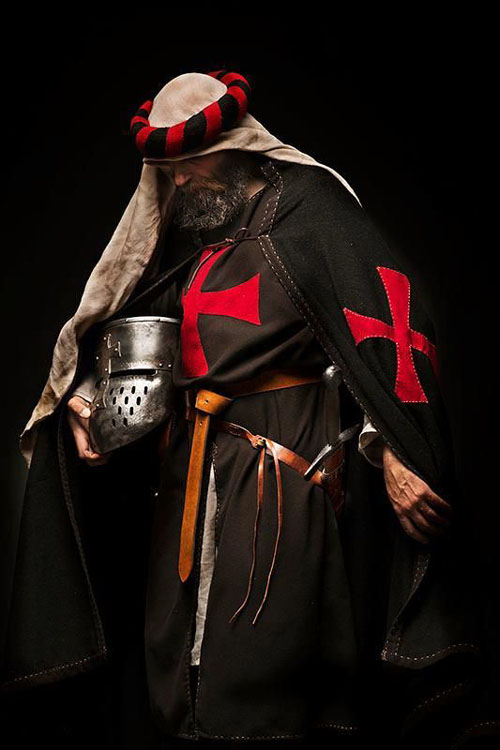
.jpg)


